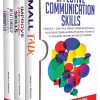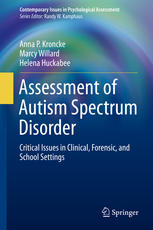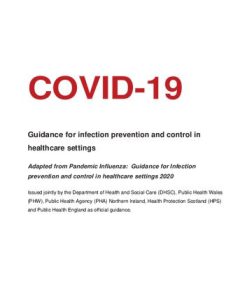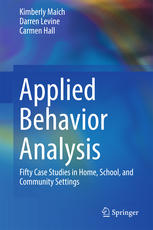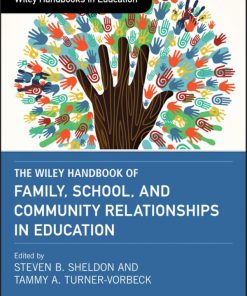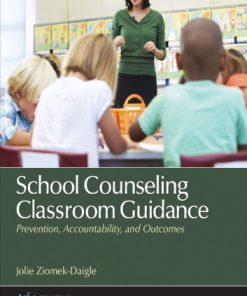Prevention Science in School Settings Complex Relationships and Processes 1st Edition by Kris Bosworth 1493931552 9781493931552
$50.00 Original price was: $50.00.$25.00Current price is: $25.00.
Prevention Science in School Settings Complex Relationships and Processes 1st Edition by Kris Bosworth – Ebook PDF Instant Download/DeliveryISBN: 1493931552, 9781493931552
Full download Prevention Science in School Settings Complex Relationships and Processes 1st Edition after payment.
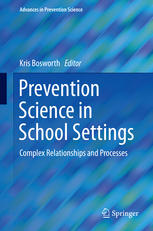
Product details:
ISBN-10 : 1493931552
ISBN-13 : 9781493931552
Author: Kris Bosworth
This straightforward volume makes a strong, practical, research-based case for integrating prevention programs into middle and high schools. Written by experts in prevention science and education, it examines educational goals and prevention of risky behaviors as parallel and complementary processes and provides evidence for health-promoting schools as a critical forum for student development. Chapters show the benefits of this collaboration, as instructors engage with prevention content, prevention scientists study schools and create interventions, and counselors develop and implement activities, resulting in improved academic, social, and health outcomes. Examples of successful prevention strategies address personal and public health issues as varied as substance abuse, dating violence, dropping out, and suicide. Among the topics covered: Engaging school leaders in prevention Developing school-based prevention curricula Scaling up evidence-based prevention interventions and practices Conducting prevention research and evaluation in schools Promoting a positive school climate and culture Reducing disruptive behavior, violence, and bullying Child and school psychologists, administrators, teachers, school counselors, and prevention specialists will find significant common ground in Prevention Science in School Settings. The breadth and depth of coverage point to new, multidisciplinary directions in health education, school climate/culture, and positive youth development.
Prevention Science in School Settings Complex Relationships and Processes 1st Table of contents:
Chapter-1 Exploring the Intersection of Schooling and Prevention Science
1.1 Educational Environment
1.2 Educational Priorities
1.3 Prevention Science
1.4 Integration Opportunities
1.4.1 Evidence-Based Practice
1.4.2 Multitiered Support Systems
1.4.3 Data-Based Decision-Making
1.4.4 Health Disparities/Achievement Gap
1.4.5 School Climate and Culture
1.5 Future Issues
1.5.1 Technology
1.5.2 Neuroscience
1.5.3 Next Steps
References
Part I
How Schools Work
Chapter-2 The Story of Schools, Schooling, and Students from the 1960s to the Present
2.1 The Central Narratives of Schools: The 1960s to the Present
2.1.1 Desegregation and Radicalism
2.1.2 Reification of Student Performance and the Achievement Gap
2.1.3 Achievement Testing and International Comparisons
2.1.4 A Nation at Risk
2.1.5 Standards and Assessments
2.1.6 Incompetent Teachers: Controlling Teachers by Controlling Outcomes
2.1.7 No Child Left Behind
2.1.8 School Budgets: Reductions, Incentives, and Race to the Top
2.1.9 National Curriculum: The Common Core Initiative
2.2 Newcomer Narratives: The Power of the Naive Voices
2.2.1 Motion Picture and Media Stories
2.2.2 Teach for America
2.2.3 Alternatives, Vouchers, and School Choice
2.3 Counter-Narratives of Students in Schools
2.3.1 Critical Perspectives
2.3.2 Diversity and the Ever-Widening Achievement Gap
2.4 Conclusion: What We Know and Where We Need to Go
References
Chapter-3 Leadership in American Schools
3.1 The Hierarchy of Educational Leadership
3.1.1 The Political Level of Educational Leadership: School Boards
3.1.1.1 The Application of School District Policies to Prevention
3.1.2 The Professional Educator Level of Leadership
3.1.2.1 Interstate School Leaders Licensure Consortium (ISLLC) Standards for Educational Leadership
3.1.3 Superintendents
3.1.3.1 Application of the Superintendent’s Role to Prevention
3.1.4 Principal
3.1.4.1 Application of the Principal’s Role to Prevention
3.2 Structure and Support
3.3 Everyday Activities of Prevention-Minded Educational Leaders
3.4 Conclusion
References
Chapter-4 Professional Counselors’ Impact on Schools
4.1 The Role of Professional School Counselors
4.2 The ASCA National Model: A Comprehensive Vision for the Role of School Counselors
4.3 Integrating Prevention Science into School Counseling
4.4 School Counselors as Implementers of Prevention Programming
4.4.1 Needs Assessment and Program Identification
4.4.2 Program Delivery
4.4.3 Evaluation of Prevention Programming
4.5 Summary and Case Examples
4.5.1 Universal Prevention in a High School
4.5.2 Targeted HIV/Acquired Immunodeficiency Syndrome (AIDS) Prevention with At-Risk Adolescent Girl
4.5.3 Comprehensive Suicide Prevention in Schools
4.6 Implications and Future Directions
References
Chapter-5 Teachers on the Front Line of Prevention Science
5.1 Overview of the Knowledge Base for Teaching
5.2 Educational Preparation for the Teaching Profession
5.3 Professional Development Throughout the Teaching Career
5.4 The Life of a Teacher
5.5 The Complexity of Teaching
5.6 The Prevention Specialist and the Teacher: Principles for Successful Collaboration
5.6.1 Empathize
5.6.2 Provide Ongoing Support
5.6.3 Be Flexible
5.7 Conclusions
References
Chapter-6 Health Services and Health Education
6.1 Introduction
6.2 Health Services
6.2.1 School Nursing
6.2.2 School-Based Health Services
6.2.3 School-Linked Health Services and Community Schools
6.3 Health Education
6.4 Case Study: HealthMPowers
6.5 Summary
References
Part II Prevention Science
Chapter-7 Prevention Science 1970–Present
7.1 Growth of Prevention Science
7.2 Defining Events
7.2.1 Temperance Movement—US Constitutional Amendments 18 and 21
7.2.2 Surgeon General’s Report on Smoking and Health—Cigarette Labeling and Advertising Act of 1
7.2.3 Len Bias—Drug Free Schools and Communities Act
7.3 Creating an Infrastructure for Evidence-Based Strategies
7.3.1 Federal Reports and Responses
7.4 Schools and Prevention Initiatives
7.5 The Next Generation Prevention Science in the 1990s
7.5.1 Defining Prevention Science
7.5.2 Prevention in the 1990s
7.5.3 Documenting Evidence-Based Practice
7.5.4 Research to Practice
7.6 Issues with Evidence-Based Practice
7.6.1 Questions of Effectiveness
7.6.2 Scaling-Up
7.7 Twenty-First Century
7.7.1 Research
7.8 Conclusion
References
Chapter-8 Developing School-Based Prevention Curricula
8.1 A Recent History of U.S. Prevention Efforts
8.2 Considerations for Creating Effective Curricula
8.2.1 Practical Considerations
8.2.2 Logic Model
8.2.3 Risk and Resiliency/Protection
8.2.4 Developmental Appropriateness
8.2.5 Culture
8.3 Exemplars
8.3.1 All Stars (www.allstarsprevention.com)
8.3.2 keepin’ it REAL (kiR) (www.real-prevention.com)
8.3.3 LifeSkills Training (LST) (www.lifeskillstraining.com)
8.4 Current Trends
8.4.1 Develop Interventions with Implementation/End User in Mind
8.4.2 Universal–Targeted–Tailored Interventions
8.4.3 Adaptation in Dissemination
8.4.3.1 Designer Adaptation
8.4.3.2 Implementer Adaptation
8.4.3.3 Participant Adaptation
8.4.4 Integration of New Media
8.4.5 Quality Control, Continuous Improvement
8.4.6 Capacity Building
8.5 Conclusion
References
Chapter-9 Scaling Up Evidence-Based Preventive Interventions
9.1 What Is Scaling Up?
9.2 Conceptual Frameworks
9.3 Dissemination and Adoption
9.3.1 Partnerships
9.3.2 Factors Related to School Readiness and Capacity for Implementing Evidence-Based Programs
9.3.3 Factors Associated With Adoption and Implementation of EBIs
9.3.4 Characteristics of the Intervention
9.3.5 Organizational and Community Factors
9.3.6 Characteristics of Program Implementers
9.4 Case Study: Project Towards No Drug Abuse Background
9.4.1 Going to Scale
9.4.2 Evidence for Successful Scaling Up
9.4.3 Lessons Learned
9.5 Summary
References
Part III Research in and with Schools
Chapter-10 Schools as Venues for Prevention Programming
10.1 The Focus of School-Based Prevention Efforts
10.2 Complexities in Implementing Prevention Programs in Schools
10.3 Program Development and Adoption
10.3.1 Identifying the Needs of the Schools
10.3.2 Selecting the Most Appropriate Intervention Approach
10.3.3 Assessing School Capacity or Readiness for a Program
10.3.4 Collaborating with Schools on Intervention Selection and Development
10.4 Implementation Phase
10.5 Sustainability
10.6 Conclusion
References
Chapter-11 Conducting Prevention Research and Evaluation in Schools
11.1 Planning with Districts and Schools
11.2 Recruitment
11.2.1 Recruitment at the District Level
11.2.2 Recruitment at the School Level
11.2.3 Recruitment at the Teacher Level
11.2.4 Recruitment at the Student Level
11.2.5 Recruiting Families in School-Based Research
11.2.6 The Use of Incentives in School Research
11.3 Data Collection
11.3.1 Requests for Student Records
11.3.2 Experiments in Schools
11.4 Communication
11.5 Summary
References
Chapter-12 School As a Unit of Assignment and Analysis in Group-Randomized Controlled Trials
12.1 Study Design
12.2 Recruitment and Enrollment into GRTs
12.3 Measurement
12.4 Implementation
12.5 Considering Design When Analyzing Data
12.6 Dissemination
12.7 Conclusion
References
Part IV Relationships Between Education and Prevention Science—Parallel Tracks
Chapter-13 School Culture and Classroom Climate
13.1 School Effects on Students’ Behavior
13.2 Settings-Based Approaches to Prevention in Schools
13.3 Prevention Through Addressing the School Culture
13.3.1 The Gatehouse Project, Australia
13.3.2 The Aban Aya Youth Project, USA
13.3.3 The Healthy School Ethos Project, England
13.4 The Centrality of the Classroom Climate
13.5 The Future of Prevention in Schools
References
Chapter-14 Social and Emotional Learning (SEL): A Framework for Academic, Social, and Emotional Success
14.1 Skills for Success in School, Work, and Life
14.2 History of SEL as a Framework for Academic, Social, and Emotional Success
14.3 SEL Programs
14.3.1 Impact of SEL Programs
14.3.2 Characteristics of Effective SEL Programs
14.4 SEL in Practice
14.4.1 Respect and Responsibility Program: A Homegrown SEL Initiative
14.4.2 The Humanware Initiative: A Systemic Approach to SEL
14.5 Conclusion
References
Chapter-15 Promoting Safe Schools for All Students
15.1 Introduction
15.2 Secret Service Study
15.3 Contemporary Approaches to School Climate and Safety
15.4 Evidence-Based Prevention Programs
15.5 Special Topics in School Violence
15.5.1 Bullying
15.5.2 Teen Dating Violence
15.6 School Crisis Response
15.6.1 Crisis Prevention and Preparedness
15.6.2 Crisis Response and Recovery
15.7 Threat and Risk Assessments
15.8 Conclusion
References
Chapter-16 School-Based Adolescent Suicide Prevention
16.1 Introduction and Prevalence
16.2 Risk Factors Associated with Adolescent Suicide
16.2.1 Individual Level
16.2.2 Microsystem Level
16.2.3 Exosystem Level
16.2.4 Macrosystem Level
16.3 School-Based Suicide Prevention Interventions
16.4 Conclusion
References
Chapter-17 Dropout Prevention: A Previously Intractable Problem Addressed Through Systems for Monitoring and Su
17.1 High School Dropout Used to Be Viewed as a Problem That Was Almost Impossible to Address
17.1.1 Early Identification Is Possible, Based on Students’ Course Performance
17.1.2 Students Often Fall Off-Track to Graduation During School Transitions
17.1.3 School Practices Affect Individual Students’ Likelihood of Withdrawal
17.2 Early Warning Systems Have Successfully Improved Ninth-Grade Achievement in Chicago, and More S
17.2.1 Schools Serving Highly Disadvantaged Communities Have a Particularly Acute Need for Strong Or
17.2.2 Systems for Monitoring and Support Make It Possible for Practitioners to Support Students
People also search for Prevention Science in School Settings Complex Relationships and Processes 1st:
prevention science definition
prevention in schools
prevention science
prevention school shooting
what is prevention science
Tags: Prevention Science, School Settings, Complex Relationships, Processes, Kris Bosworth
You may also like…
Relationships & Lifestyle - Diet & Nutrition
Education Studies & Teaching
Well Being Positive Peer Relations and Bullying in School Settings 1st Edition Phillip T. Slee
Politics & Philosophy - Social Sciences
Medicine - Infectious diseases
Politics & Philosophy - Social Sciences
Politics & Philosophy
Education Studies & Teaching - School Education & Teaching
The Wiley handbook of family, school, and community relationships in education Sheldon
Politics & Philosophy - Social Sciences
School Counseling Classroom Guidance: Prevention, Accountability, and Outcomes Jolie Daigle


